Distinguished Critique: Batman: Ten Nights of the Beast Review
A Jim Starlin classic, this taut thriller embodies real world tensions through the clash of two driven, desperate titans
—by Nathan on September 30, 2025—
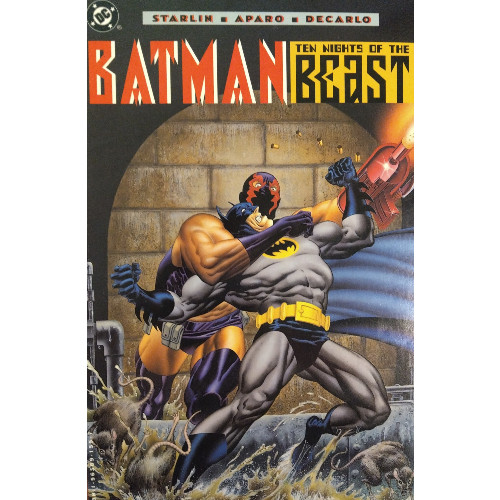
Maybe you've been in this scenario: you decide to go out of your way at work to do something for somebody, without being asked, because you think it's a nice thing to do, or it could be beneficial to that person, or you want to show a bit of independence. You see a stack of papers on a coworker's desk that you think could be shredded or you respond to an email in your supervisor's stead while they're on vacation. Maybe you feel good for acting on your own, and maybe you think that person will appreciate your efforts.
Except the papers you shredded were important documents your coworkers needed for a meeting, and you accidentally responded to the wrong email because you weren't paying careful enough attention to the email addresses. And now your coworker or boss is upset.
Take a hold of that feeling; don't internalize it, but just linger for a second on the bit of remorse or regret you may encounter.
That is what Anatoli Knyazev should be feeling the second he steps onto a shoreline south of Gotham City, or maybe if not that second, then shortly after he murders eight DEA agents looking for cocaine smugglers who just happen to tragically stumble upon the Soviet agent. Knyazev lives up to his infamous nickname "The Beast"–a wild, ferocious animal who has slipped his handlers' reins and come to Gotham City on his own accord. He was entrusted with a mission and given the enhancements to carry it out, and even though a Russian diplomat assures Commissioner Gordon, the FBI, and the CIA that the mission was scrapped, the "KGBeast" is still here, in Gotham, to kill ten people.
The KGBeast will not feel remorse of any kind while he carries out this mission. And it's gonna take a lot more than his Russian supervisor telling him "Bad job, Anatoli" to make him regret it.
Batman: Ten Nights of the Beast
Writer: Jim Starlin
Penciler: Jim Aparo
Inker: Mike DeCarlo
Colorist: Adrienne Roy
Letterers: John Costanza and Agustin Maz
Issues: Batman #417-420
Publication Dates: March 1988-June 1988
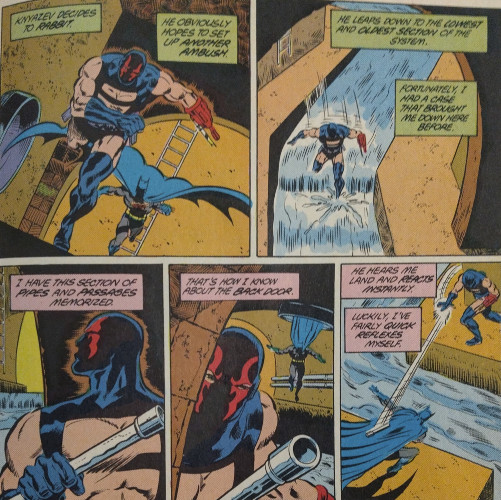
Jim Starlin is a man with an impressive resume, and if you don't trust his Marvel work with Captain Marvel, Warlock, or Thanos (or even his more adult-oriented fare for Marvel) to give you a good overview, then check out his Batman material: his "cult" classic limited series, his use of the second Robin, or his infamous slaying of Jason Todd are all considered strong narratives woven by a storyteller without peer. Paired with classic Batman artist Jim Aparo for this four-parter, Starlin unleashes his capabilities with the written word masterfully in this tale, a little under a year before Jason wound up on the receiving end of the Joker.
Reading "Ten Nights of the Beast," I was actually reminded of my biggest gripe with "A Death in the Family": Starlin sneaking some Cold War era politics by having the Joker find diplomatic immunity with the Ayatollah Khomeini. It seemed goofy, a weird application of actual politics to have the Joker escape the Dark Knight Detective. I was concerned that another story based on actual global conflicts and featuring actual U.S. President Ronald Reagan would leave me with the same frustrations. Starlin's handling of global politics serves the story better here, particularly as it isn't brought up in just one chapter of the story but instead forms the framing upon which the narrative is constructed.
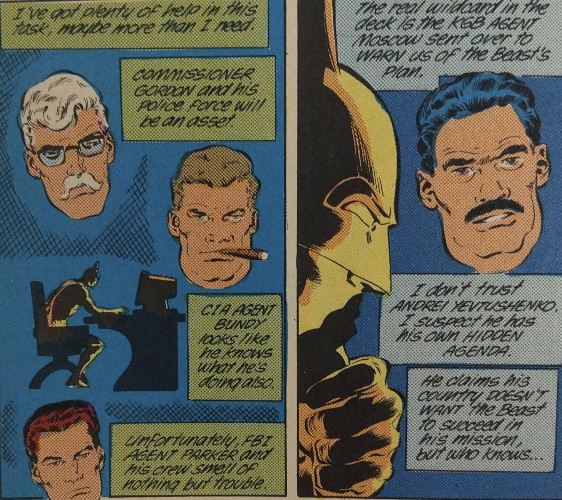
The KGBeast is a ruthless, cold-hearted, single-minded murderer, racking up an unnecessarily high body count to ensure he nails the targets he's hunting. Starlin sets him up as a rogue agent of the Soviet Union that representatives of the USSR desperately want to leash again, and yet the fear lingers in the background that the Soviets may not be completely honest. Either way, the Beast is a nightmare: if he's actually a Soviet agent, he's an incredibly dangerous weapon for the USSR to wield, acting in ways which could push two adversarial countries to war. But if he's acting on his own, then this stone-cold killer answers to a power outside a government agency, possibly reaching a level of fanatical nationalism or just pure, unadulterated rage and hatred that fuels his every waking step.
It's never stated directly, but I feel the Beast's greatest weapon isn't his cleverness, his athletic ability, or his mastery of multiple fighting forms and weapons…it's his ability to sow paranoia. When a Soviet representative gets into a shouting match with a CIA agent, the two bandy words about fears concerning disarmament and lay their positions out clearly: they say neither side wants nuclear war, yet their ways of ending such a possibility are wildly different and built upon tension rather than trust. And without that trust, the good guys are in trouble. Heck, the FBI don't even trust Batman, the lone vigilante on the Beast's trail, hoping to catch the killer through official means and channels rather than leaping across buildings under cover of darkness and sneaking into places where one shouldn't snoop.
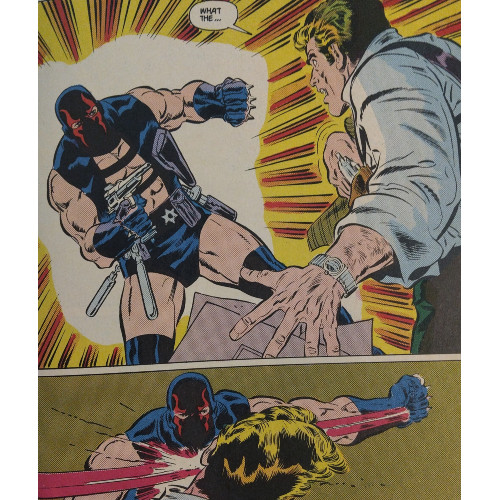
Starlin doesn't necessarily treat the authorities like incompetent morons–though the less said about the FBI the better–but they're largely around to create political intrigue and suffer from the effects of the Beast's paranoia. Starlin's true stars are Batman and the Beast, two men operating at cross purposes outside the confines of authority and legal action, developing a brief feud between each other over these four issues. In the Beast, Batman sees a monster who's a better fighter than even the Dark Knight Detective yet his equal in absolute and obstinate determination. The Beast is resolved to kill as many people as he can, and Batman is resolved to save them. These cross-purposes are cemented well by Starlin in fights where the Beast genuinely endeavors to murder Batman. This isn't the Joker getting his goons to try to pump the Dark Knight fulla lead or the Riddler leading him into a death trap. The Beast needs little support and not much in the way of outlandish weaponry; he's more than willing to murder Batman with his bare hands.
Their battles–on rooftops and in the sewers–represent not so much a clash of political or national ideologies but philosophical lines. How they each see life, something easy to remove or discard vs. something worth saving and protecting, guides their conflict internally and externally. It's why the Beast willingly suffers a catastrophic injury late in the story to avoid capture, and it's why Batman pushes himself after being battered and shot to keep punching, throwing darts, fighting. It doesn't matter that his aim is off, doesn't matter that he just took a slug to the shoulder, he just keeps coming, finding new ways to counter the Russian juggernaut he's facing.
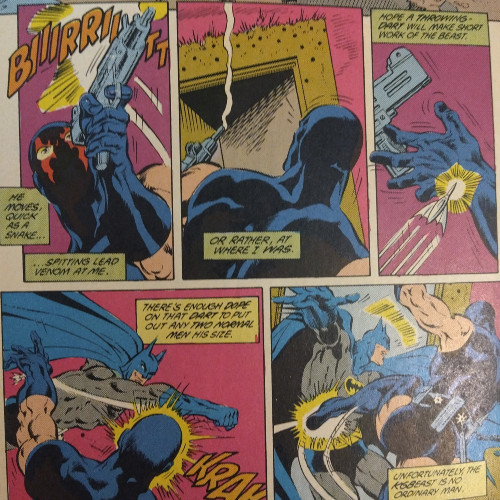
This is a Batman pushed to the edge, and I don't just mean physical edges, because he finds himself falling off buildings a few times. An excellent three page sequence is devoted to the different maneuvers Batman must make to catch and save a man the Beast tosses off a ledge. We're given his thought process as well as the lengths he'll go, sacrificing his own safety and risking bodily injury to protect life. This is a Batman, we're told, who knows the city so dang well, he's pinpointed the exact location of flagpoles–flagpoles!–he can use to catch himself when falling. This is a Batman who's asked to consider all methods of stopping the Beast, even if it means considering crossing certain lines he'd otherwise stay behind. The whole "Batman doesn't kill" debate is utilized effectively, with the notion brought up a few times and building towards a climactic final showdown with the Beast. Batman doesn't physically kill anyone, and it's not like he uses a gun (like who would ever make him do that?), but Starlin places him in that gray moral morass where he must seriously consider alternate options to throwing an seemingly unstoppable killing machine in jail.
As for that "seemingly unstoppable killing machine," where the Beast lacks characterization, he makes up for in sheer grim power. I've noted his determination, and this is seen nowhere better than a scene where the Beast chops his own hand off to escape Batman. Part of me feels the scene is slightly over the top–I question the absolute need for the Beast to sever his own hand–but it showcases his ruthlessness and ability to not let even the most grievous of injuries put him down. You don't admire the Beast necessarily, but you may marvel somewhat at his tenacity and fortitude. It makes him a compelling villain, even without a backstory. He's this strong, masked brick wall of a man who doesn't know when to quit and will go to extreme lengths to complete his goal. He'll kill over 100 people to ensure he murders the ten right ones, try to ram a schoolbus to get free of Batman, or like I said, sever his own hand so he can live to fight another night. And he's smart, too, with Starlin using his intelligence in ways which terrify the reader. You never feel the Beast is too intelligent or too powerful–just enough to have an edge over Batman and the authorities, make even the smallest victory Batman achieves against him feel significant, and force Batman into a moral corner the Dark Knight needs to put some serious brainpower into escaping.
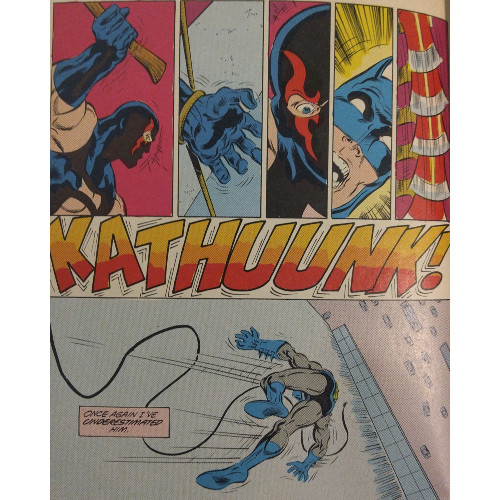
The ending is controversial for reasons I won't enumerate here to avoid spoilers, but I don't find it difficult to swallow. It fits the theme Starlin weaves throughout this volume, that the Beast is too much for Batman to take down forcefully, that he's too powerful and smart to cage like an animal, that justice doesn't have one solution for each problem. It's a gray ending, sure, and it places Batman in a position different from his nobler peers like Superman and Wonder Woman. But those are the areas where Batman operates best, and as I mentioned above, this story won't get anyone into the "Batman should/shouldn't kill people!" quibbling like Zack Snyder's Dawn of Justice did. Not much attention is drawn by Starlin to this ending, actually, leaving me to wonder if readers have made it a bigger deal than it was actually meant to be.
"Ten Nights of the Beast" may not get a solid 10/10 from me, but it's a very, very well-told Batman narrative. It's considered a classic from Starlin, and you can find it on the same "Best Batman Stories" lists with Starlin's The Cult and "A Death in the Family," as well as other essential Batman narratives. Starlin and Aparao expertly pull in actual tensions as the bedrock for this caper, never leaning too far into political diatribes and never making the real American/Soviet Union conflict feel awkward within the fictional Gotham City. This is probably because their main actors, the Bat and the Beast, represent more than just their nationalities. Yes, a war is fought here for the future of two nations embroiled in the Cold War, but there is also an internal war battled between these ferocious antagonists. Batman nearly rips his arm out of its socket to save a man, while the KGBeast cuts off his own hand so he can keep killing people, and its those external injuries which I feel best exemplify the moral batteries powering our two adversaries throughout this four-issue epic.